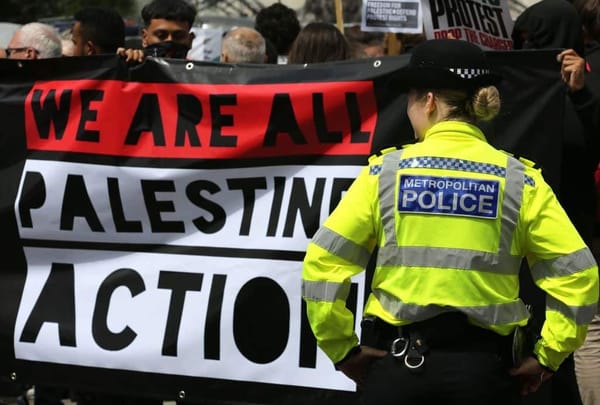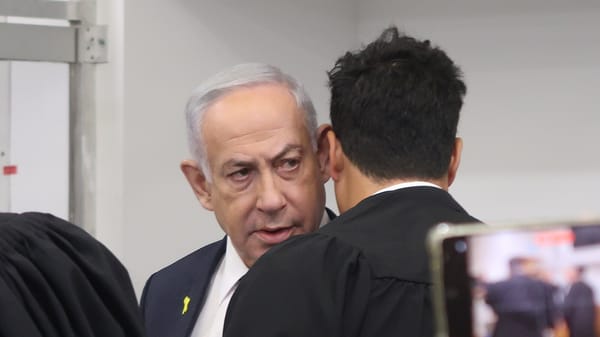Where Is Anne Frank?
We need to talk about Anne Frank.

Directed by Ari Folman and produced with the support of the Anne Frank Fonds, Where Is Anne Frank (2021) infantilises viewers not because it is an animated film, but because of its cartoonish political simplicity.
Visualised by Lena Guberman, the project – which took eight years to complete – is accompanied by a robust educational programme, developed in collaboration with UNESCO. Despite its noble aims, the film has found little favour at the box office, and various reviews have commented on its insincerity and naivety, though without interrogating the political implications of its liberal message.
Our heroine is red-haired Kitty, the imaginary friend of Anne Frank and a key character in her world-famous diary, penned in the Amsterdam attic where she hid for two years during the Second World War.
Folman’s film argues that the true meaning of Anne’s journal – namely, that (child) victims of war should be humanised – has been eroded and its legacy fetishised. He shows Kitty, tempestuously created and personified, dismayed by the prevalence of Anne’s name in Amsterdam – a moniker lent to hospitals, libraries and theatres – in a contemporary Europe where refugees are treated at best, disdainfully and, at worst, fatally. So, Kitty steals the diary. Posters then plaster the city, demanding its whereabouts and offering a princely reward for its safe return. The resulting chase, by a handful of hapless police officers, forms the body of the plot.
At a police station, Kitty meets Ava, a young refugee from Mali, and the parallels between her experience and Anne’s are drawn. Yet unlike Anne, Ava’s journey into precarity lacks depth and background. We see a dusty plain, faceless soldiers emerging unexpectedly, a dark sky over a hanging rock, the sea stretching out into the distance, and fences upon fences. Despite the brief hint that Ava is Malian, it’s clear, from both the movie and Folman’s comments in this Q&A, that she is intended as an avatar for all refugees from Africa.
In presenting Ava’s plight as a generalisable one, to be remedied through Kitty’s compassion, Folman shirks his responsibility as a storyteller to examine the structures which perpetuate the refugee crisis. We cannot and should not talk about refugee flows from Mali without talking about European complicity. A former French colony, which played host to thousands of French troops between 2013 and 2021, the state has experienced a migration crisis since 2012, following an armed rebellion in the north and an ensuing military coup. These conflicts, which implicate much of the Sahel, are in part exacerbated by climate change driven by consumption in the Global North. As shifting weather patterns erode traditional forms of livelihood, “families send their children to armed groups as a form of income” reported Foreign Policy in 2021.
Best known for the Golden Globe-winning Waltz with Bashir (2008), which depicts his experience and (mis)remembering of the 1982 Lebanon War, Folman is no stranger to accusations of decontextualization. Reviewing the film for The Electronic Intifada, Naira Antoun in 2009 criticised its dehumanising depiction of Palestinians, exemplified by its failure to subtitle the Arabic cries of targets of the Sabra and Shatila massacre, thereby othering Palestinian pain. Such criticism was echoed in Haaretz by Gideon Levy, who describes the film as an “infuriating, disturbing, outrageous and deceptive” work, designed to distract from Israel’s role as a military occupier. Also, absent in the film are the political realities which laid the way for the killings, which, though committed by the Lebanese Christian Phalangists, were enabled by the Israeli army. Such was the conclusion of the Kahan Commission, which was established in 1982 to investigate the massacre.
The conclusion of Where Is Anne Frank only serves to enforce Folman’s depoliticised message, which substitutes the specific for the general, and action for sentiment. When the police arrive at a warehouse, ready to deport the migrants sheltering there, Ava’s father, a sailmaker, works through the night with Kitty and her anarchist beau to stitch together a blimp. Painted on its side are three words, answering the film’s eponymous question: “I am here”. Kitty sets out an ultimatum, dangling the diary over the burner: grant everyone asylum, or the book burns (a grave threat, not least due to its Nazi resonances). Crowds swell outside the warehouse, applauding the stunt; the deportation halts. A policeman makes phone calls, to bureaucrats, to a head of state. Minds are changed. Everyone can stay. Kitty has saved the day.
It’s a dramatic act of protest and could no doubt inspire real-life demonstrations, just as Three Billboards Outside Ebbing, Missouri (2017) provided a set piece for Justice 4 Grenfell activists in 2018. It’s also undeniably kitsch. Described by Sight & Sound as a swerving “into white saviour territory”, this scene provides a perfect staging of a phenomenon, which, as described by Milan Kundera in The Unbearable Lightness of Being (1984):
causes two tears to flow in quick succession. The first tear says: How nice to see the children running in the grass! The second tear says: How nice to be moved, together with all mankind, by children running in the grass! It is the second tear which makes kitsch kitsch.
Kitsch is a trick mirror, allowing us, the viewers, to substitute purely emotional responses for ones grounded in realpolitik and a searching reflection of the ways in which we may be complicit in the systems which make misery of the lives of migrants. Viewers, invited to empathise with Kitty and the kindly crowd, are able to ignore the possibility that the film could have ended with hostility. Yet the response of the public to Kitty’s balloon is unrealistic. Contrast the reception of Little Amal, a giant puppet of a ten-year-old Syrian child, pelted with stones by far-right protestors in Greece as she “walked” last year from the Syria-Turkey border to the United Kingdom.
Through centring Kitty instead of the refugees; depicting the granting of asylum as an act of grace instead of a hard-fought-for legal right; and failing to use the imaginative cinematic space to call for a dismantling of Fortress Europe, neo-imperialism, and the conditions which placed Ava and her ilk in such precarity, the film deprives the stateless persons it depicts of their right to be agents of change in their own lives.
Those who would consider such demands on a children’s film to be unnecessarily onerous should recall that this is a Holocaust film, a topic which brings with it particular ethical demands. In her essay The Future of Auschwitz, philosopher Gillian Rose argues for the curation of Holocaust exhibits which compel onlookers to investigate their complicity in the technocracy and bureaucracy which made its horrors possible:
This might contribute to a change in awareness and a questioning of our sentimentality as modern citizens, protected in all “innocence” by the military might of the modern state.
It's an ethical imperative to which two of the most successful animated depictions of fascism - Maus (1991) and Josep (2020) - rise, through their interrogation of the structures which enable state violence. Contrast Where Is Anne Frank with Art Spiegelman’s Maus, the first and only graphic novel to win a Pulitzer Prize. Spiegelman’s father, Vladek (depicted, along with all the other Jews in the book, as a mouse) becomes upset that Art’s wife Françoise would pick up a black hitchhiker. Berated for his attitude, Vladek replies “It’s not even to compare, the scwartsers and the Jews!” exposing the possibility that even the most-persecuted persons can be guilty of prejudice.
Oppositely, Josep (2020), Aurel’s animated motion picture about the anti-fascist Catalonian cartoonist Josep Bartoli, depicts Serge, a kind-hearted concentration camp guard who gifts Josep a pencil, so he can continue drawing. On a personal level, Serge is redeemable, yet structurally, he still participates in the totalitarian violence of the state. If racism is the result of prejudice plus power, then effective anti-racism demands the dismantling of power, rather than mere kindness. This encouragement by both works of critical self-reflection makes them artistic – and ethical – successes.
Ultimately, Where Is Anne Frank is a missed opportunity and does a disservice to the complexity of the diary. Its sentiment offers no lessons to adults, or to the children it openly hopes to teach. Filled with hot air, Kitty’s balloon is a political, as well as a literal, fabrication.▼
Lauren Chaplin is a lawyer and micro-influencer.





